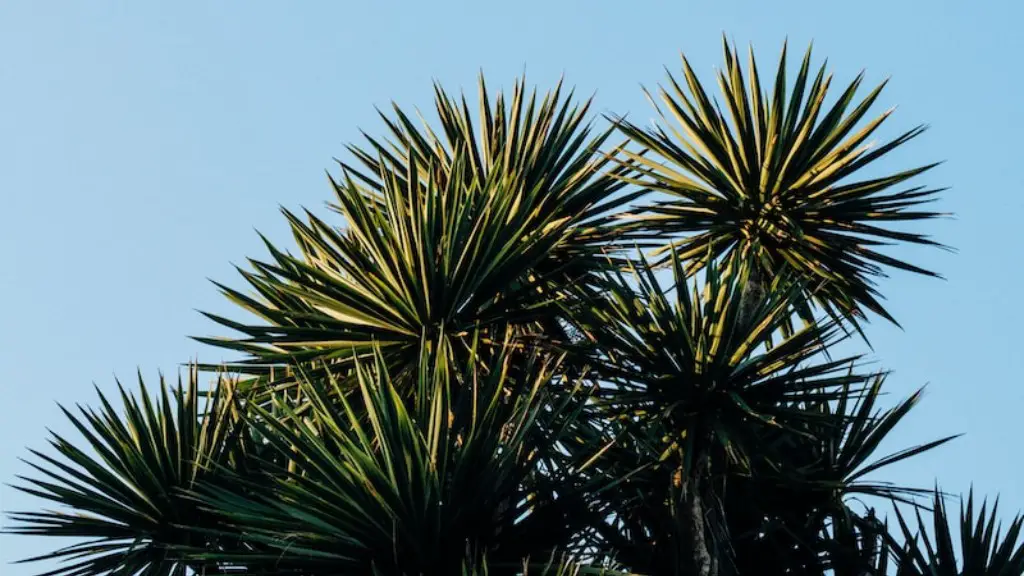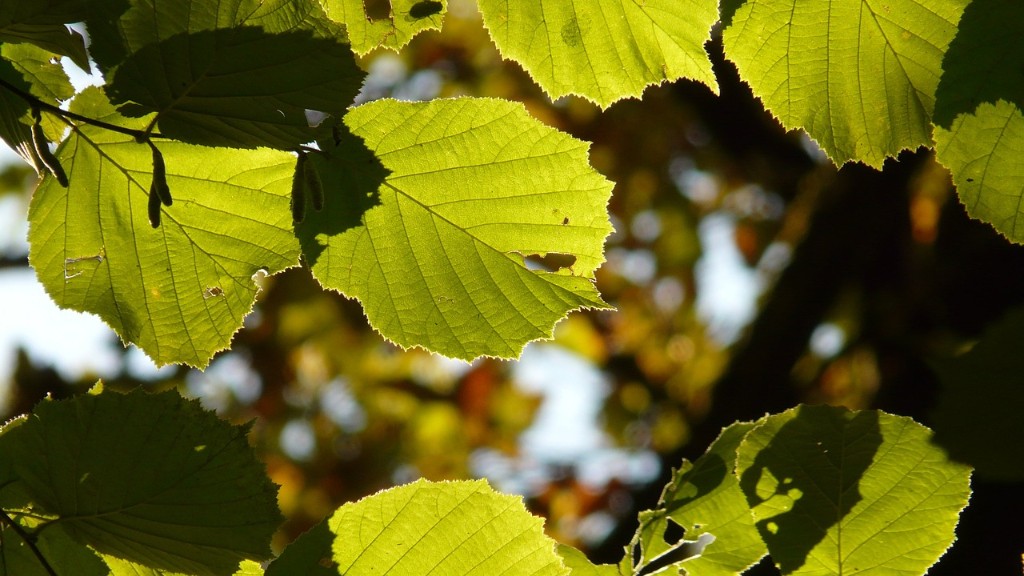Planting Instructions for Bottle Palm Trees
1. Bottled palms are native to areas that experience intermittent, wet and dry climates. As a result, they should be planted in a well-draining soil that is rich in organic matter. Adequate drainage should be ensured by providing proper sloping, avoiding clay and choosing sandy soils over loamy soils. If necessary, amend the soil with Perlite, Vermiculite or leaf mold.
2. Prepare a planting hole that is large enough to accommodate the tree’s root system. At least double the diameter of the root ball, and around the same depth. Place some of the soil mix at the bottom of the hole to raise the tree up slightly.
3. Place the bottle palm in the hole, backfilling it with the prepared soil. Press the soil down gently around the tree, making sure there are no air pockets.
4. Stake the tree to help support it and anchor it in the soil. Use a wooden or metal stake, making sure it does not pierce the root system. Secure the tree to the stake with a soft support bill.
5. Water the tree deeply, making sure the entire root system is saturated. A thick layer of organic mulch should be placed around the root system to conserve moisture and limit weed growth. A layer of mulch at least two inches thick should be used.
6. Bottle palms should be fertilized with a slow release fertilizer in late winter or early spring. Avoid over fertilizing and do not fertilize during drought conditions.
7. Prune a bottle palm on a regular basis. Remove any dead, diseased or straggly branches as needed. Pruning should be done sparingly to maintain the unique shape and structure of the tree.
Caring for Bottle Palm Trees
1. Bottle palms require full sun to perform well. They can be planted in partial shade as well, but will only flower and have a full appearance in full sun locations.
2. Water bottle palms deeply, enough to fully saturate the root system. They are drought tolerant, but will perform best with regular watering. During dry periods, the soil should not be allowed to dry out completely.
3. Bottle palms are not susceptible to many pests or diseases. However, they are vulnerable to root rot and can be attacked by caterpillars and scale insects. Keeping the tree in a healthy state, with adequate water and nutrition, is the best defense against these pests.
4. Bottle palms grow slowly and need only minimal pruning to maintain their shape and structure. If using pruning shears, be sure to clean them with rubbing alcohol to avoid spreading diseases.
5. Fertilize a bottle palm only if necessary. If it appears to be struggling, or not producing enough flowers and fruits, apply a slow release fertilizer in late winter or early spring.
6. Bottle palms are long-living trees, and can survive and thrive for many years with appropriate care. In order to preserve the desirable shape and structure, it is important to protect the palms from winds and other harsh weather conditions.
7. Propagating a bottle palm tree is possible. Take cuttings of the terminal stems, remove all leaves and plant in moist soil. The cuttings should develop roots within 6-8 weeks.
Advantages of Bottle Palm Trees
1. Bottle palms are an attractive, low-maintenance tree. They have an interesting shape and structure, and with minimal pruning, can be kept to a desired size.
2. Their slow growth habit makes them ideal for small spaces. As long as they receive adequate sunlight and water, they can grow in containers or planters.
3. Bottle palms are tolerant of a wide range of growing conditions, making them a suitable choice for many different climates. They are resistant to pests and disease and require minimum maintenance.
4. Bottle palms are often used as an ornamental tree in landscaping. They can provide privacy, as well as an attractive backdrop for any garden.
5. Bottle palms are often used for an accent in a garden, or as a focal point. They are incredibly hardy and can survive in cold or drought conditions.
6. As their name implies, bottle palms have a unique shape that resembles the profile of a glass bottle or urn. The unique shape, along with their low maintenance nature, makes them an ideal choice.
7. Bottle palms are relatively low-cost, making them an attractive choice for many homeowners. They are easy to find in garden centers or nurseries, and are often available on the Internet.
Harvesting Bottle Palm Trees
1. Bottle palms produce fruits that contain oil in the seeds, which can be harvested and used for cooking or medicinal purposes. The fruit should be harvested when ripe, usually in the late summer or fall.
2. To harvest the fruit, carefully cut off the top of the fruit with a sharp knife. Wear gloves when harvesting to protect your hands from the spiky leaves.
3. Extract the seeds by gently squeezing the fruit over a clean container. The oil can then be extracted from the seeds by cold pressing them.
4. The oil from the bottle palm’s seeds is rich in polyunsaturated fatty acids, which makes it a healthy alternative to other cooking oils. It can also be used for medicinal purposes, as it has anti-inflammatory and antioxidant properties.
5. Harvested fruit can also be eaten fresh or cooked. The flesh is sweet and juicy, and the taste is comparable to a pineapple or mango.
6. Great care should be taken when harvesting the fruits, as the leaves can be quite sharp. Wear protective gloves and eye protection when harvesting the fruits.
7. The flesh is edible, but the seeds should not be consumed. The seeds contain toxins that can cause severe stomach pains if ingested.
Proper Storage of Bottle Palm Fruit
1. Harvested bottle palm fruit can be stored for several weeks, although it is best to use it as soon as possible. The fruit should be stored in dry, dark, and cool area to ensure maximum freshness.
2. The fruit can be stored in the fridge, but the temperature should not drop below 44°F to prevent the flesh from becoming soggy. Fruits can also be stored in a cool pantry, wrapped in newspaper.
3. To prevent spoilage, the fruit should not be exposed to air. If storing for a longer period of time, cut the fruit into small pieces and store them in an airtight container.
4. Frozen fruit can last for up to three months, however the texture may be slightly different. To freeze the fruit, cut it into small pieces, spread them out on a baking sheet, and freeze for several hours. Once frozen, transfer the pieces to a freezer-safe bag or container.
5. Fresh bottle palm fruit can also be canned for longer storage. Cut the fruit into small cubes and place in a jar. Fill the jar with boiled sugar syrup, seal it with a lid, and let it sit for at least a month before using.
6. Canned bottle palm fruit can last up to a year or longer when stored in a cool, dark place. Once opened, keep the canned fruit in the fridge and consume it within a week.
7. Fresh or canned bottle palm fruit can be used in a variety of recipes, including smoothies, pies, ice cream, and chutneys.
Growing Bottle Palm Trees from Seeds
1. Growing a bottle palm tree from a seed is possible, but it is a long and slow process. The tree typically takes between 8 to 10 years to begin producing fruit.
2. Start with good quality, fresh seeds. Soak the seeds in purified water for 48 hours to soften the outer shell.
3. After soaking, carefully crack the shell, taking care not to damage the seed. Plant the seeds 1 inch deep in a pot with a well draining soil.
4. Place the pot in a warm, sunny spot. Water regularly, and make sure the soil does not dry out. Within a few weeks, the seeds should begin to sprout and the plants should begin to grow.
5. As the plants grow, they will need to be transplanted into larger pots as necessary. When the palms are approximately 2 to 3 feet tall, they can be transplanted into the ground.
6. To transplant into the ground, prepare a planting hole that is large enough for the root ball. Take care not to damage the roots when transplanting.
7. Once planted, water deeply and apply a slow-release fertilizer in late winter/early spring. Monitor the tree’s growth and provide regular water to ensure good health.
Choosing the Right Bottle Palm Tree
1. Bottle palms come in a variety of shapes and sizes. When selecting one to plant, consider the climate in which the palm will be grown. Some varieties are more tolerant of colder climates than others.
2. Consider the size and shape of the bottle palm. There are both tall and short varieties available, as well as those with narrow or wide trunks. Select a palm that is appropriate for the available space.
3. Bottle palms come in various colors. Darker varieties are more tolerant of cold temperatures and will have a more colorful appearance in warmer climates. Lighter varieties are ideal for warmer climates.
4. When selecting a bottle palm, it is important to inspect the trunk for structural flaws. A healthy trunk should be free from cracks or diseases. Look for a healthy root system.
5. Consider the cost of the bottle palm when selecting one. Prices can vary widely, depending on size, variety, and availability. It is best to shop around for the best deal.
6. Avoid buying a palm tree grown in a container that is too small. It will be difficult for the tree to establish itself in the soil if the roots have become over-grown or root-bound.
7. Ask questions before buying a bottle palm. Make sure the tree has been grown in a suitable climate and condition. Determine how long the tree has been in its current pot, as larger palms may require more time to establish themselves.
Conclusion
1. Bottle palms are an attractive, low-maintenance tree that can provide atmosphere, privacy, and protection in a garden or landscape. They are tolerant of a wide range of growing conditions, making them an ideal choice for many climates.
2. Planting a bottle palm is relatively simple. Prepare the soil, dig a hole twice the size of the root ball, backfill, and secure it with stakes. Water the tree deeply and apply a thick layer of mulch to conserve moisture and limit weed growth.
3. Bottle palms require minimal care and maintenance. They should be fertilized with a slow release fertilizer once a year, and pruned regularly to maintain the desired shape and structure. They are also resistant to pests and disease.
4. Bottle palms produce fruits that can be harvested for oil or eaten fresh. The fruit can be stored in the fridge or frozen for longer storage. Canned fruits are also available.
5. Growing a bottle palm tree from a seed is possible, but takes a long time. Soak the seeds in water, plant 1 inch deep in a pot, and transplant into the ground when the palm is around 2 or 3 feet tall. Make sure to choose a variety that is appropriate for the climate.


